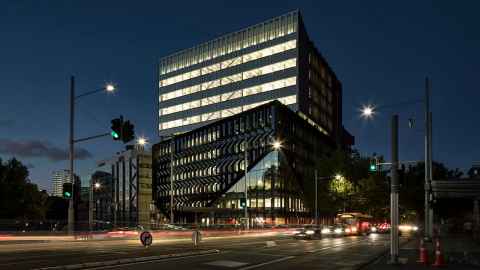Tuning Science sees power savings
16 October 2019
Over the last nine months, Property Services’ technical staff have been altering and assessing systems like lighting and ventilation to ensure the building is operating at maximum efficiency.

Over the last nine months, Property Services’ technical staff have been ‘tuning’ the Science Centre building. Tuning refers to a schedule of tasks to alter and assess systems like lighting and ventilation to ensure the building is operating at maximum efficiency.
Although the Science Centre (Building 302) opened in 2016, a building takes time to ‘settle’ as occupancy levels consolidate, spaces become fully operational and data on usage and outputs is collected. Since starting the ‘tuning’ process, Lead Building Services Engineer, Gary Davenport, reported energy savings of 6.2 percent for the first quarter of 2019 in comparison to the previous year.
Gary explains that the ‘tuning’ of buildings was rarely done in the past because it is an added expense on top of the expectation that a new building will operate to its specifications from day one. But Gary advocates for a long-term view and believes the investment is worthwhile: "Reduced energy consumption, low maintenance costs and improved occupant comfort and less staff (or tenant) complaints, to name a few. Tuning also gives us a higher NABERSNZ rating (a system for rating the energy efficiency of office buildings in New Zealand)", said Gary.
The work to tune the Science building was difficult, but the project team are happy with the insights and knowledge they now hold. “The team also understand the importance of building handover based on international ‘soft landings’ methodology," said Gary. According to consulting engineers BECA, an effective ‘soft-landing handover’ results in energy savings of at least 20 percent. With the University scheduled to officially open the new Engineering Building in early 2020, the tuning project team are confident that the lessons learnt will be put straight to work.
Science Centre specific tuning tasks include:
- Re-calibrating energy-check meters to ensure recorded data is accurate and enabling better diagnosis of energy-saving methods
- Implementing demand-based ventilation in rooms that have a large variance in occupancy
- Additional tuning of settings on air conditioning equipment based on user feedback
- A reported increase in building user comfort levels
- Rationalisation of laboratory ventilation systems